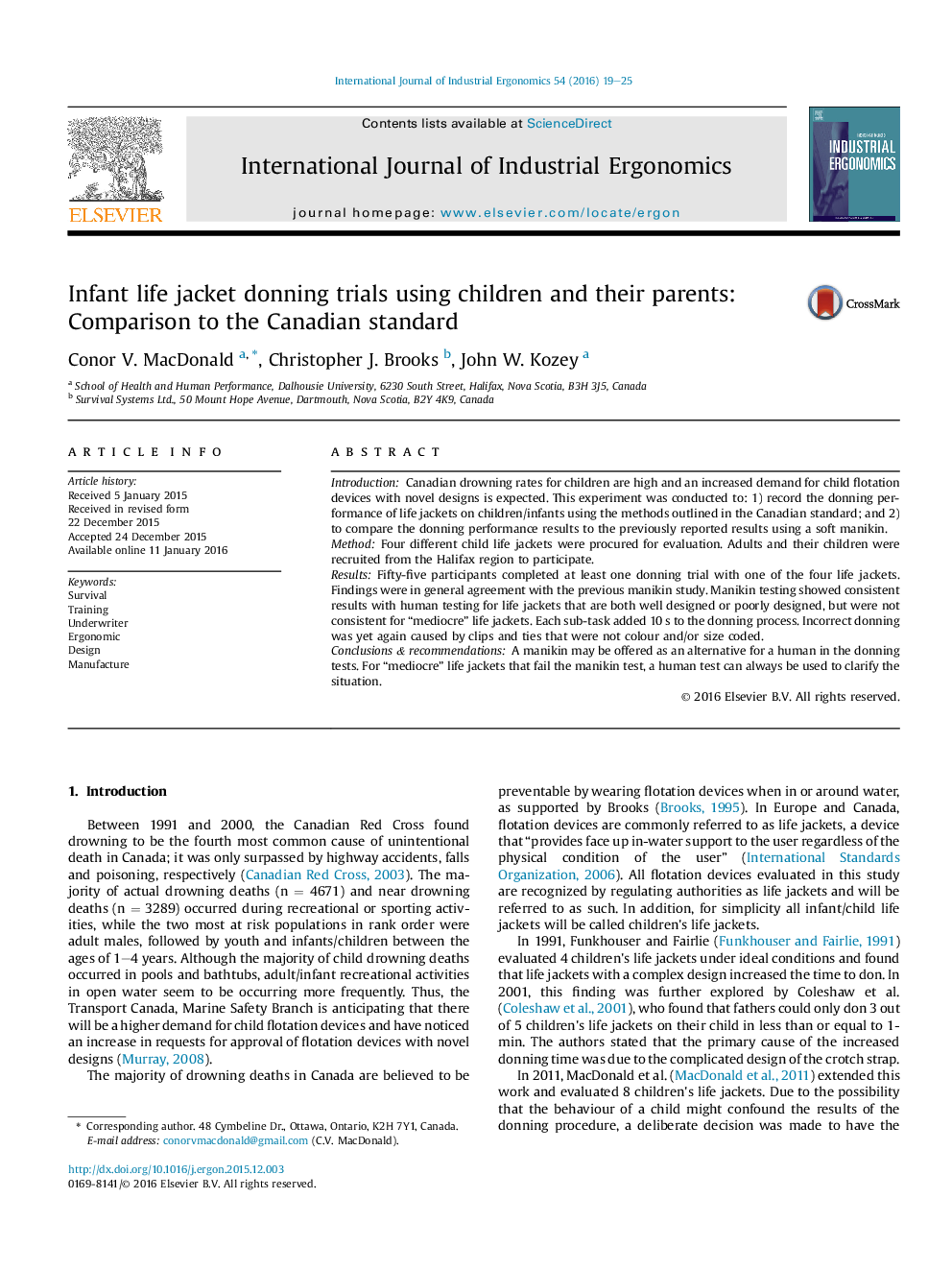| Article ID | Journal | Published Year | Pages | File Type |
|---|---|---|---|---|
| 1095777 | International Journal of Industrial Ergonomics | 2016 | 7 Pages |
IntroductionCanadian drowning rates for children are high and an increased demand for child flotation devices with novel designs is expected. This experiment was conducted to: 1) record the donning performance of life jackets on children/infants using the methods outlined in the Canadian standard; and 2) to compare the donning performance results to the previously reported results using a soft manikin.MethodFour different child life jackets were procured for evaluation. Adults and their children were recruited from the Halifax region to participate.ResultsFifty-five participants completed at least one donning trial with one of the four life jackets. Findings were in general agreement with the previous manikin study. Manikin testing showed consistent results with human testing for life jackets that are both well designed or poorly designed, but were not consistent for “mediocre” life jackets. Each sub-task added 10 s to the donning process. Incorrect donning was yet again caused by clips and ties that were not colour and/or size coded.Conclusions & recommendationsA manikin may be offered as an alternative for a human in the donning tests. For “mediocre” life jackets that fail the manikin test, a human test can always be used to clarify the situation.
